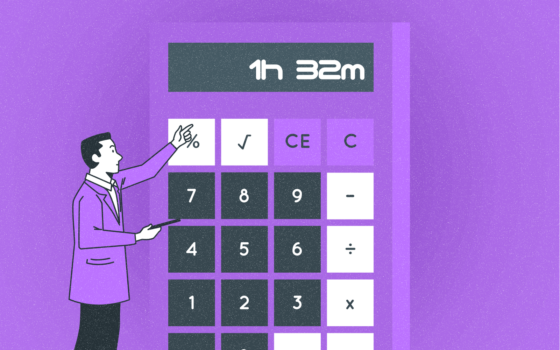What Is a Skill Inventory?
A skill inventory is a comprehensive database or record that catalogs the skills, knowledge, and competencies of employees within an organization. It's a crucial HR tool for talent management, workforce planning, and strategic decision-making. Key points: • Facilitates effective resource allocation • Aids in identifying skill gaps and training needs • Supports succession planning and career development • Enhances organizational agility and competitiveness
A skill inventory, also known as a competency inventory or talent inventory, is a systematic approach to documenting and analyzing the collective skills, knowledge, and abilities of an organization's workforce. This powerful HR tool serves as a cornerstone for strategic human resource management, enabling companies to make data-driven decisions about their most valuable asset: their people.
The Importance of Skill Inventories in Modern HR
In today's rapidly evolving business landscape, organizations face unprecedented challenges in maintaining a competitive edge. The ability to quickly adapt to market changes, technological advancements, and shifting customer demands is crucial. A well-maintained skill inventory empowers companies to:
- Identify and leverage existing talent
- Pinpoint skill gaps and areas for improvement
- Make informed decisions about hiring and training
- Facilitate effective succession planning
- Enhance employee engagement and retention
According to a 2024 study by the Society for Human Resource Management (SHRM), organizations with robust skill inventory systems report a 23% increase in overall workforce productivity and a 17% reduction in time-to-market for new products or services.
Components of a Comprehensive Skill Inventory
A well-designed skill inventory typically includes the following components:
| Component | Description |
| Hard Skills | Technical abilities specific to job roles (e.g., programming languages, data analysis) |
| Soft Skills | Interpersonal and behavioral competencies (e.g., communication, leadership) |
| Certifications | Professional qualifications and industry-recognized credentials |
| Education | Formal academic achievements and ongoing learning |
| Experience | Work history, project involvement, and practical applications of skills |
| Proficiency Levels | Assessment of skill mastery (e.g., beginner, intermediate, expert) |
| Career Aspirations | Employee goals and desired career trajectories |
Implementing a Skill Inventory System
Creating and maintaining an effective skill inventory requires a strategic approach and ongoing commitment. Here's a step-by-step guide to implementing a skill inventory system:
- Define objectives: Clarify the specific goals and intended outcomes of your skill inventory initiative.
- Identify key competencies: Determine the critical skills and knowledge areas relevant to your organization's success.
- Choose a data collection method: Select appropriate tools and processes for gathering skill information (e.g., surveys, assessments, interviews).
- Implement a suitable technology solution: Invest in a robust HR information system (HRIS) or talent management platform to store and analyze skill data.
- Train stakeholders: Educate employees, managers, and HR personnel on the purpose and use of the skill inventory.
- Collect and validate data: Gather skill information from employees and verify its accuracy.
- Analyze and report: Generate insights from the collected data to inform decision-making.
- Maintain and update: Regularly review and refresh the skill inventory to ensure its ongoing relevance and accuracy.
Benefits of a Well-Maintained Skill Inventory
Organizations that invest in comprehensive skill inventories can reap numerous benefits:
• Improved talent allocation: Match the right people to the right projects or roles • Enhanced workforce planning: Identify future skill needs and proactively address gaps • Streamlined recruitment: Target candidates with specific skills to complement existing capabilities • Optimized training and development: Focus resources on areas of greatest need or strategic importance • Increased employee engagement: Provide clear pathways for skill development and career progression • Better succession planning: Identify high-potential employees and prepare them for future leadership roles • Enhanced organizational agility: Quickly adapt to changing market conditions by leveraging existing skills
Challenges and Considerations
While the benefits of skill inventories are clear, implementing and maintaining them can present challenges:
- Data accuracy and currency: Ensuring information remains up-to-date and reliable
- Employee privacy concerns: Balancing the need for information with individual privacy rights
- Resource intensiveness: Allocating sufficient time and resources for ongoing maintenance
- Technology integration: Seamlessly incorporating skill inventory data into existing HR systems
- Cultural resistance: Overcoming potential employee reluctance to share skill information
To address these challenges, organizations should focus on clear communication, robust data governance policies, and user-friendly systems that encourage employee participation.
Skill Inventory Best Practices
To maximize the value of your skill inventory, consider the following best practices:
- Align with organizational strategy: Ensure the skill inventory supports overall business objectives.
- Use standardized skill taxonomies: Adopt industry-standard skill classifications for consistency and benchmarking.
- Implement self-service options: Allow employees to update their own skill profiles regularly.
- Integrate with performance management: Link skill data to performance reviews and development plans.
- Leverage AI and machine learning: Use advanced analytics to identify trends and predict future skill needs.
- Promote transparency: Share aggregated skill data to foster a culture of continuous learning.
- Conduct regular audits: Periodically review and validate the accuracy of skill inventory data.
The Future of Skill Inventories
As we look ahead, several trends are shaping the evolution of skill inventories:
- AI-driven skill mapping: Advanced algorithms will automatically update and categorize skills based on employee activities and outputs.
- Blockchain-verified credentials: Secure, tamper-proof records of skills and certifications will enhance the reliability of skill data.
- Real-time skill analytics: Dynamic dashboards will provide up-to-the-minute insights on organizational capabilities and gaps.
- Integration with external labor market data: Skill inventories will incorporate real-time industry trends to inform strategic workforce planning.
- Personalized learning recommendations: AI-powered systems will suggest tailored development opportunities based on individual skill profiles and organizational needs.
Conclusion
A well-implemented skill inventory is more than just a database; it's a strategic asset that can drive organizational success in an increasingly competitive and dynamic business environment. By providing a clear picture of an organization's collective capabilities, skill inventories enable HR professionals and business leaders to make informed decisions about talent management, resource allocation, and strategic planning.
As we navigate the complexities of the modern workplace, the importance of maintaining an accurate and comprehensive skill inventory cannot be overstated. It's a powerful tool that, when leveraged effectively, can significantly enhance an organization's ability to adapt, innovate, and thrive in the face of ongoing change.
By investing in robust skill inventory systems and practices, organizations can position themselves at the forefront of talent management, ensuring they have the right skills in the right place at the right time to meet the challenges and opportunities of tomorrow's business landscape.
Key Takeaways: • Skill inventories are essential for strategic workforce planning and talent management • Implementing a skill inventory requires careful planning, technology investment, and ongoing maintenance • The benefits include improved resource allocation, enhanced employee development, and increased organizational agility • Future trends point towards AI-driven, real-time skill analytics and personalized learning recommendations
For more information on implementing effective skill inventory systems, visit the Society for Human Resource Management's toolkit on skills gap analysis and workforce planning.


